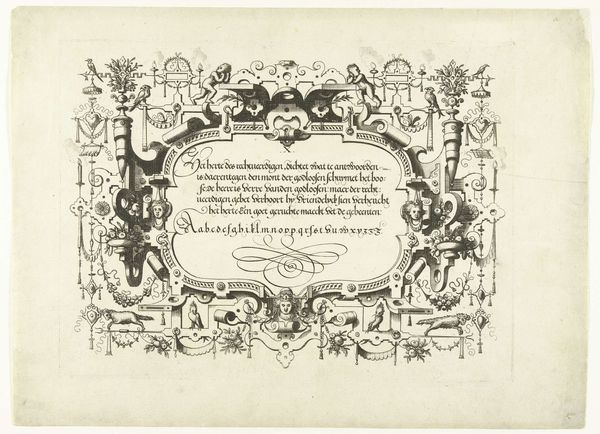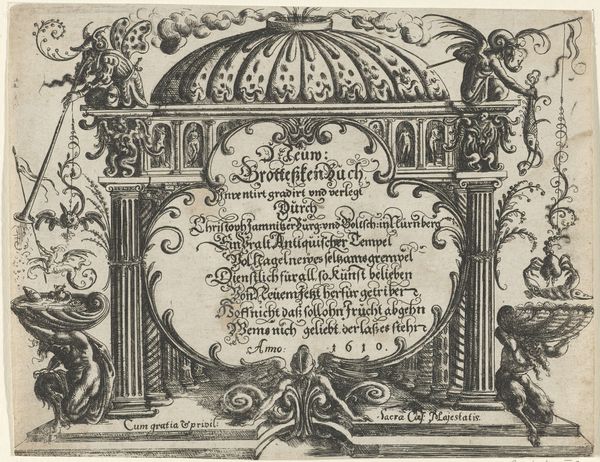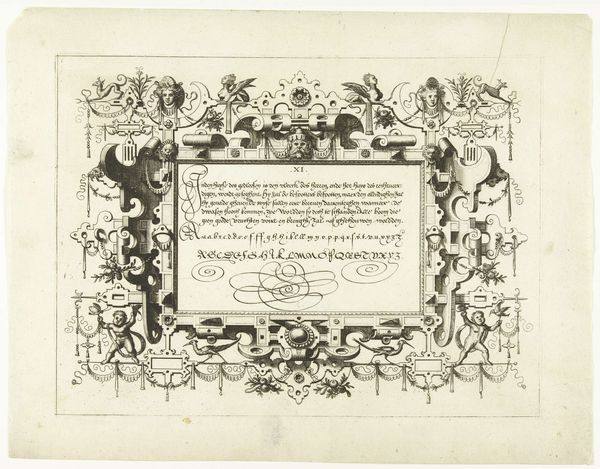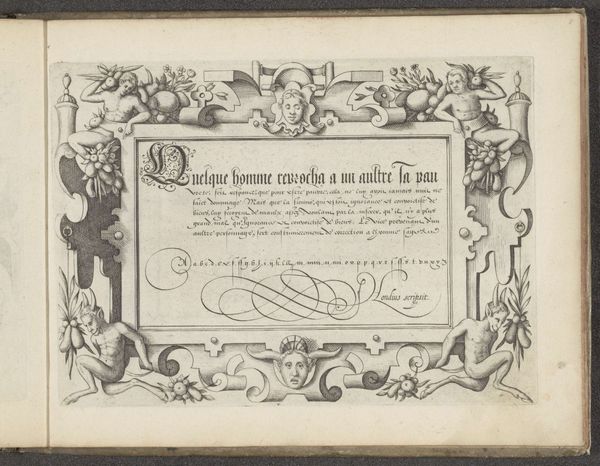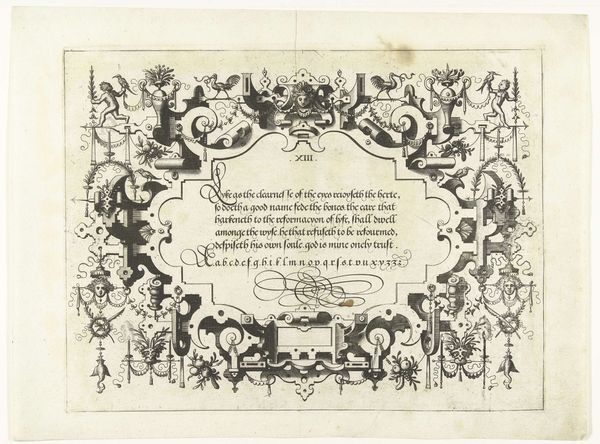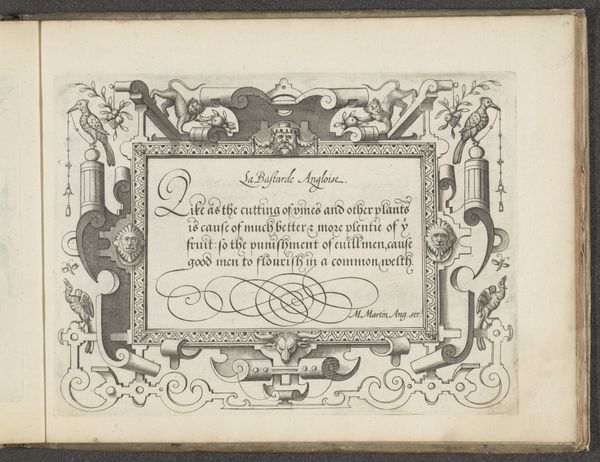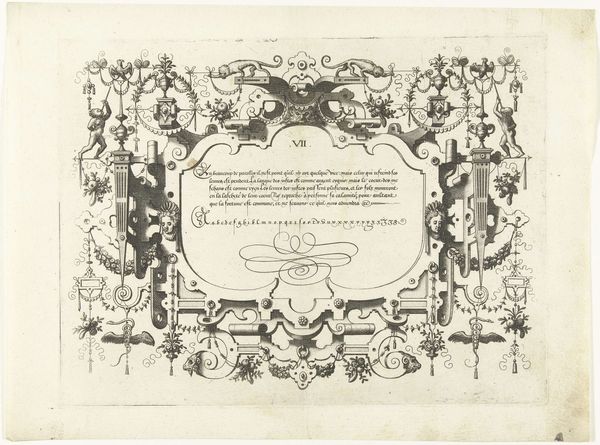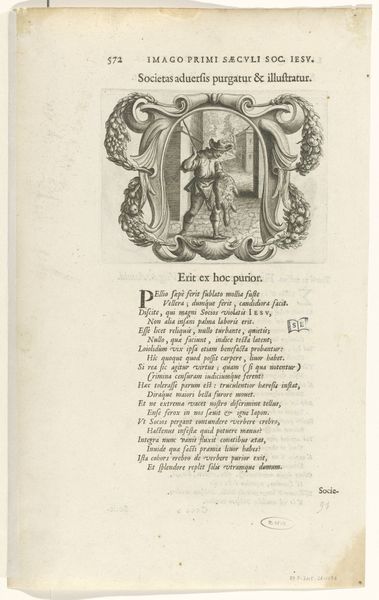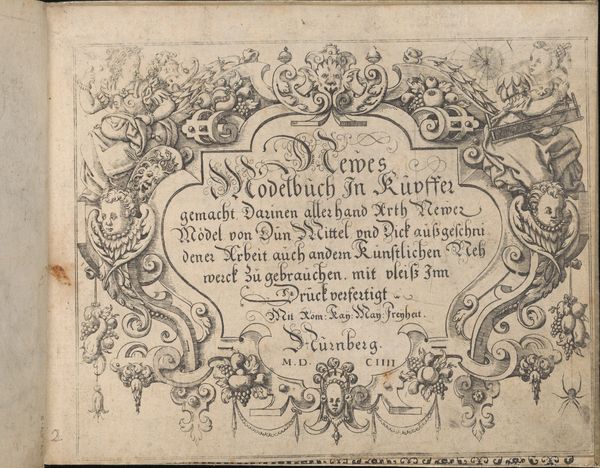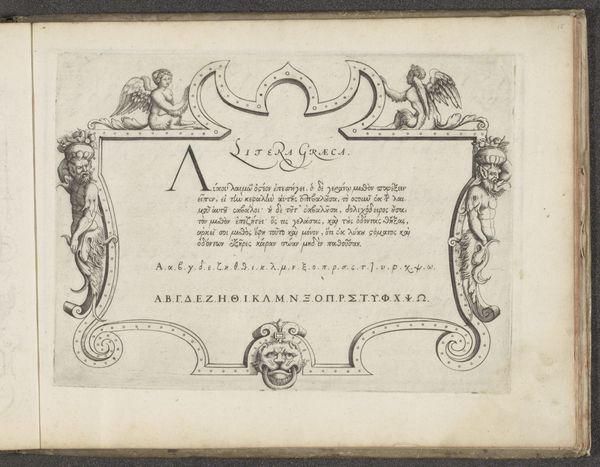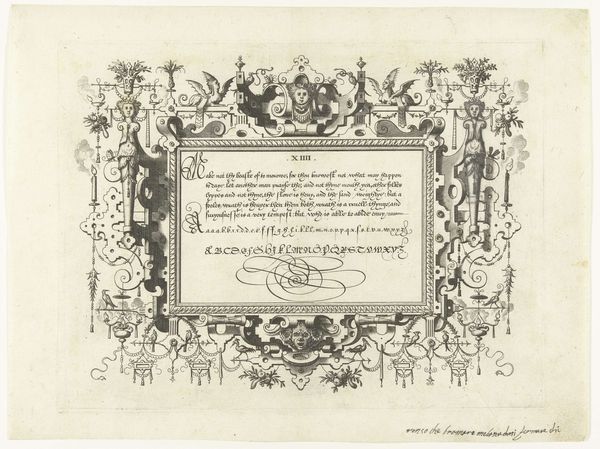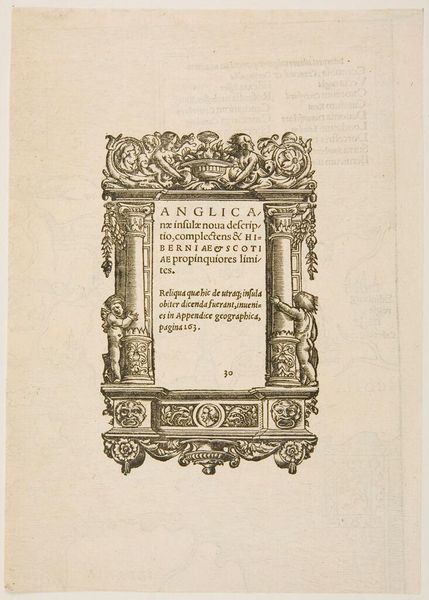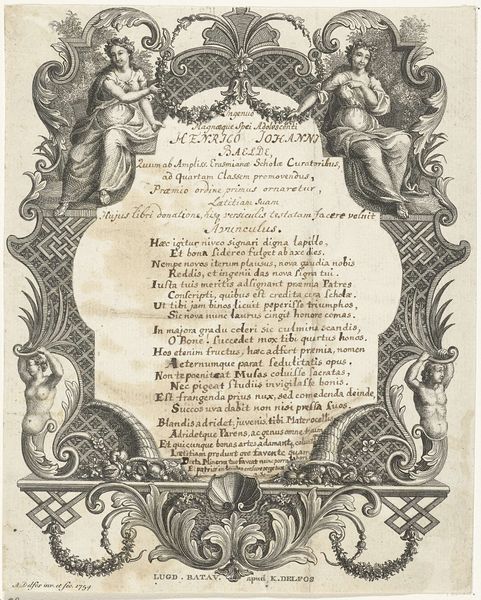
Cartouche met kalligrafie, erboven liggen twee honden 1569
0:00
0:00
johannesoflucasvandoetechum
Rijksmuseum
drawing, print, ink, engraving
#
drawing
#
pen drawing
# print
#
pen illustration
#
pen sketch
#
form
#
11_renaissance
#
ink
#
line
#
northern-renaissance
#
engraving
#
calligraphy
Dimensions: height 215 mm, width 281 mm
Copyright: Rijks Museum: Open Domain
Editor: This intricate engraving, titled "Cartouche met kalligrafie, erboven liggen twee honden," was created in 1569 by Johannes or Lucas van Doetechum. I’m struck by the density of detail, almost overwhelming. It feels very formal and deliberate, like a page from an important document. What’s your take on this piece? Curator: It's interesting that you use the word "document" because that directs our attention to the question of the status of imagery and the power dynamics related to the rise of print culture at this time. These ornamental prints circulated widely and shaped taste. Note how calligraphy, the written word, becomes part of the visual spectacle, interwoven with ornament and figuration. What do you think that tells us about the social function of this object? Editor: That's fascinating. So, it’s not just about the text itself, but the overall visual presentation lending authority and prestige? The combination of elegant lettering and decorative elements creates a sense of importance, almost like branding for an idea or statement? Curator: Exactly! Consider the inclusion of elements like the dogs, cherubs, and floral arrangements. They add a layer of sophistication but also associate the text with particular tastes and elite visual cultures. Printmaking allowed for the standardization and dissemination of design, which impacted the rise of particular visual aesthetics during this period. Are there any details that might point to a specific socio-political alignment? Editor: I suppose the religious text indicates its Protestant allegiance? Curator: That's very possible, since, following the Reformation, many books were reproduced containing new Protestant imagery and writings. This cartouche likely catered to a specific audience during a time of great religious and political upheaval, making a bold statement about faith and patronage. Editor: I hadn't considered how prints like these participated in broader social and religious conversations. Thanks, I will think about how public tastes influenced its aesthetics, especially its function within a tumultuous time! Curator: And I will consider how that function further developed popular aesthetics. It’s amazing how much we can unpack from such a small and intricate work.
Comments
No comments
Be the first to comment and join the conversation on the ultimate creative platform.
